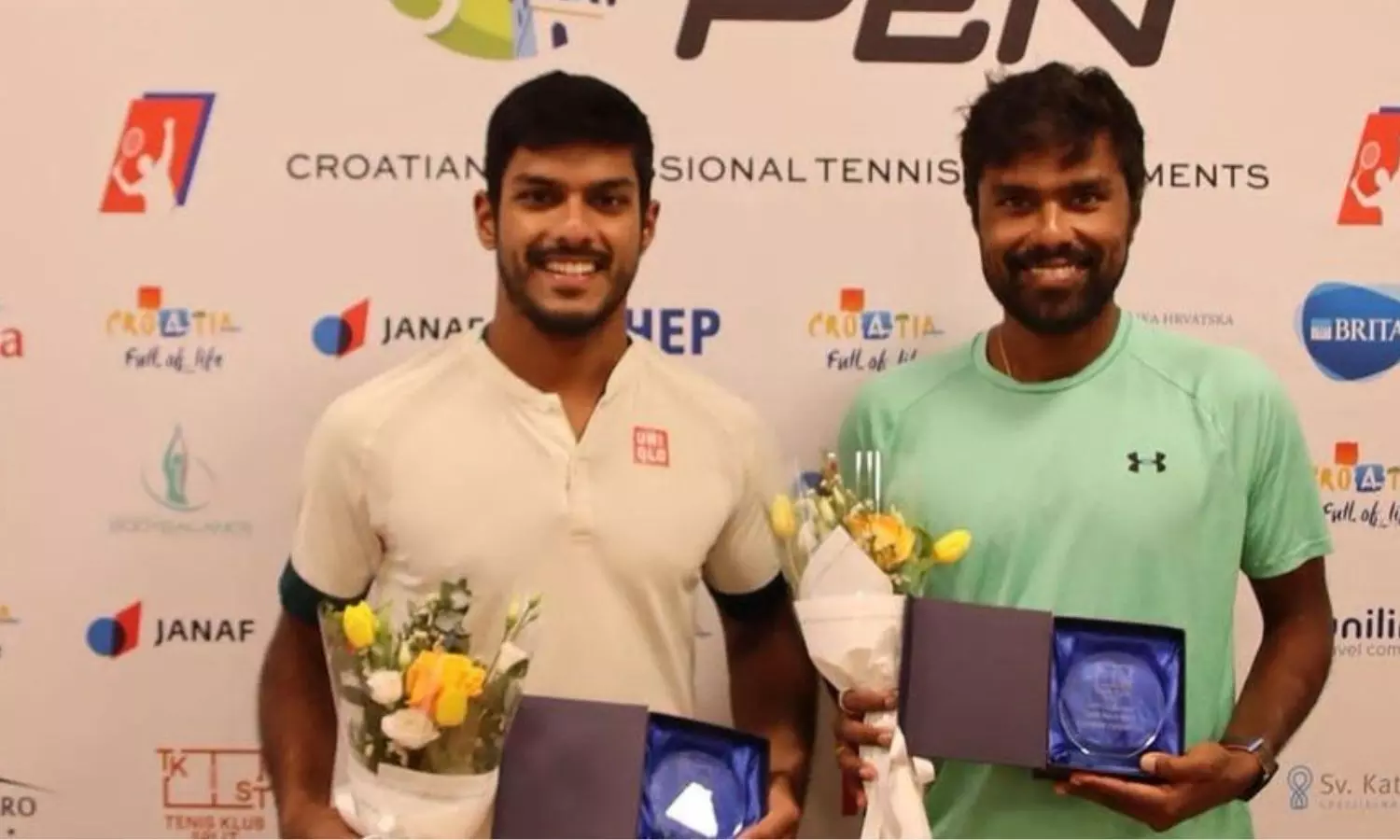Tennis
Tennis-hurdles: What it takes to beat the best
The Indian doubles-pro Anirudh Chandrasekar cites the hurdles that put the brakes on progress.

Anirudh Chandrasekar and Vijay Sundar Prasanth. (File photo: Sports Arena/Twitter)
When Sumit Nagal strode out to take on Karen Khachanov, the 18th seed, in the first-round of the 2024 French Open, Indian tennis fans were hopeful. Perhaps an upset was around the corner. After all, in April this year at the famed Monte-Carlo Masters, Nagal had taken a set off Holger Rune, a top-10 player.
But with the score-line reading 2-6, 0-6 in favour of the Russian, the writing was on the wall. And despite a last ditch effort that saw Nagal push the match to a tie-break in the 3rd set, which the Indian led at one stage at 5-3, he was nudged out.
The 18th seed was able to switch gears and up the tempo at will. Simply put, Nagal was outmuscled and outrun.
But why do Indian singles players struggle to match the power of those in top-flight tennis?
Unmatched physique
“We’re not genetically strong,” said Anirudh Chandrasekar, ranked 96 in the ATP doubles charts, in a conversation with The Bridge.
While the Indian doubles professional wasn’t in any way referring to Nagal, the point being made was with reference to the visible difference in physique when an Indian tennis player stands alongside a European on the court.
“While an Indian pro stands at roughly 5ft 10 inches, the average height of a European is about 6ft 2 inches. And their legs are extremely strong,” added Chandrasekar.
In the Nagal-Khachanov match, every time the Indian pushed the Russian wide on the back-hand and charged the net, seemingly poised to finish with a volley, the 18th seed was equal to the task.
Sprinting, whilst putting his legs to good use, Khachanov would not only get to the ball, but also succeed in passing Nagal at the net, leaving the Indian deflated.
And that’s one of the reasons why, according to Chandrasekar, India has several doubles professionals on tour.
“Indians are skilful. The feel we have on the ball is great and that's why doubles players are coming up. We volley a lot and that's a major factor (for doubles).”
While genetic modification is in the realm of science-fiction and beyond the control of a player, can a player not train adequately to bridge the gap?
Conditions matter
“While the facilities in India are getting better, we don’t train the right way,” said Chandrasekar.
“First and foremost is the condition we play on, the Indian weather doesn't support us. Our courts are really fast in India and that’s not the case abroad. In Europe, the conditions are really slow and we aren't really physically strong enough to sustain those conditions.”
And in the harsh Indian heat, matters only get worse for a player.
“In the summer it's impossible to stay on court for more than 2-hours,” added Chandrasekar, while citing the fact that a three-set match could easily last in excess of three-hours.
That said, some Indian professionals have been able to break the glass ceiling.
“What Sumit is doing is incredible. He is giving confidence to the rest of us. Like him, Indian singles players need to have the right training base to have the level of intensity that is required for the singles game,” said Chandrasekar.
While overseas training is vital, it is certainly not easy on the wallet.
‘Most expensive sport’
Earlier this month, Chandrasekar and his partner Arjun Khadhe won the ATP Oeiras Challenger at Portugal to re-enter the ATP top-100.
But things haven’t always been rosy for him.
His elder brother PC Vignesh, peaked at 800 on the rankings and with two budding tennis players in the family, things got difficult for their parents.
To sustain an ATP rank, players need to constantly travel overseas, play tournaments and earn ATP-points. While prize money earned can buy tickets to the next event on the road, nutrition and expenses towards a physio and healthcare aren’t easy on the pocket.
When Chandrasekar began doing well, Mr. Prashant Sutar, a Pune-based businessman, showed interest and decided to sponsor him. Now possessing the ability to travel, the next challenge for Chandrasekar is to balance the workload and take care of the body.
Travel is tricky
“Continental travel is not ideal for a tennis player,” he said.
Last year, he played the Australian Open and then flew to France for two-weeks, followed by a two-week visit to the US. Immediately thereafter, he crossed over for two-weeks to Mexico and then Chile - all in a span of two-months.
“Travel gets tricky but the body gets used to it,” he said, with a smile.
Finances and the travel woes notwithstanding, Chandrasekar’s next goal is to break into the top-70s in order to receive direct entries into ATP 250 events.
And despite hurdles aplenty, he remains bullish - “Only bad results will prevent me from getting into the top-70s.”
